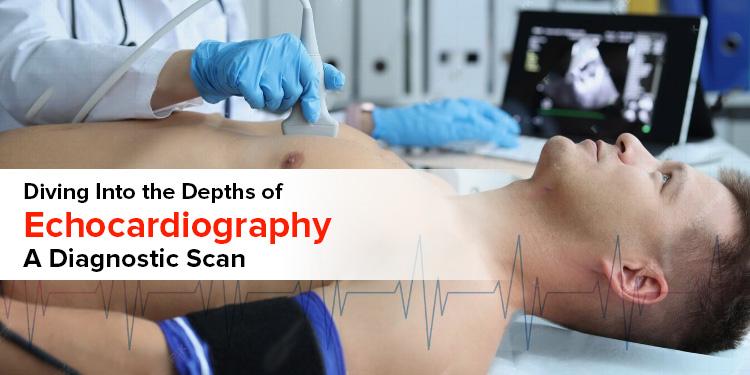Echocardiography is a diagnostic imaging technique that works on the same working principle as an ultrasound scan that makes echocardiography a type of an ultrasound scan. The operating principle of the echocardiography scan is ultrasound waves. The sound waves are entirely safe to work with. The echocardiography scan is used to produce pictures of the heart. The ultrasound scan pictures of the heart help your doctor to determine certain conditions and disorders.
The images can help determine
- The anatomical position of the heart
- The shape, size, dilation, working, and thickness of the heart and its chambers.
- The functioning and defects in the heart valves
- Fluid accumulation around the pericardium.
- Presence of any blood clots in the heart and its chambers.
- The efficiency of the heart in pumping blood and relaxing function of it.
- The heart pressure.
- Disorders associated with the main blood vessel, the aorta of the heart.
- Congenital problems of the heart.
An echocardiogram is the scan of images produced due to the echocardiography scanning technique. Echocardiograms are helpful in determining and examining the condition of the heart and heart muscles, in cases a person has had a heart attack. It can also be used for unborn babies, to determine the presence of any congenital abnormality or other irregularities of the heart of the baby. The best echocardiography scan centre near you will provide guaranteed accuracy with cost cost-friendly echocardiogram.
There are different types of echocardiograms including
- Transthoracic Echocardiography
- Transesophageal Echocardiography
- Stress Echocardiography Test
- Three-dimensional Echocardiography
- Fetal Echocardiography
The echocardiography procedure is a safe and painless technique along with its nature that it involves a non-invasive technique. The test does not use any harmful radiations or others but uses non-harmful sound waves.
Although the scan can cause certain side effects. Sometimes, the scan is performed with contrast dye. The contrast is administered into your body through the blood vessels. The contrast can cause allergic reactions in some people. The allergic reaction starts by causing redness, itching, and swelling, these symptoms start at the site of contrast injection. If you inform your health care centre timely about the allergic reactions, they can be managed timely. Sometimes, when you do not inform your doctor about the allergic reaction, they can progress to a life-threatening situation known as anaphylactic shock, therefore you should inform your doctor as soon as you experience the first sign of an allergic reaction. Additionally, the transesophageal echocardiography, there are very slight chances of esophageal perforation. With this technique, you can develop a sore throat. In stress echocardiography, you can briefly develop arrhythmias. Otherwise, the test is conducted within the safety protocols and in the guidance and supervision of qualified and trained personnel. The best diagnostic centre holds the best echocardiography machines, the best and most thoroughly trained technicians, and an overall hygienic environment in which the scans are performed. Once the scan is done, the scan reports are made available to you within 1 to two working days, in emergency situations the reports can be provided within an hour or two.


